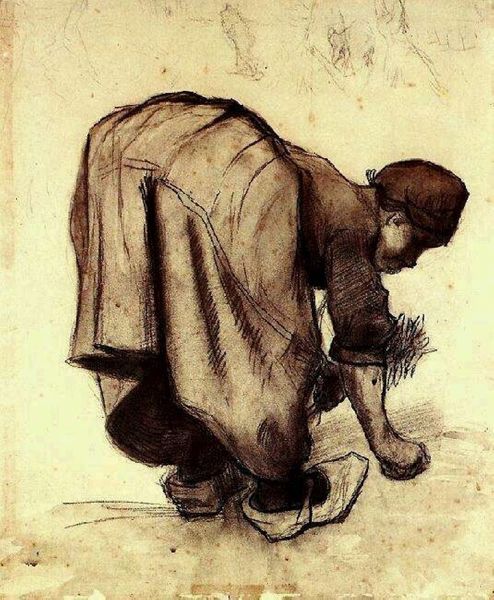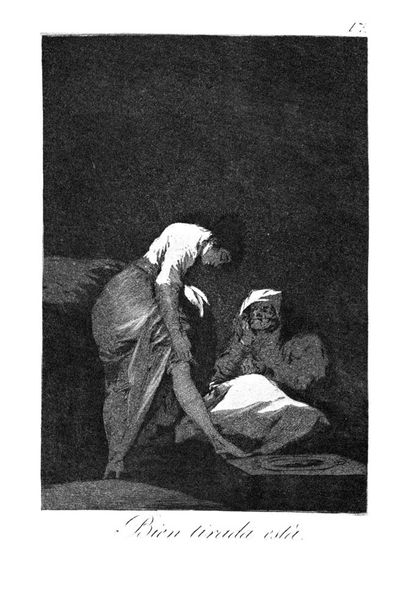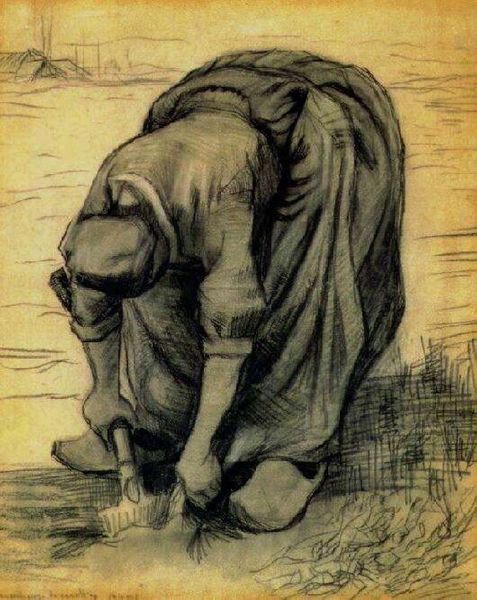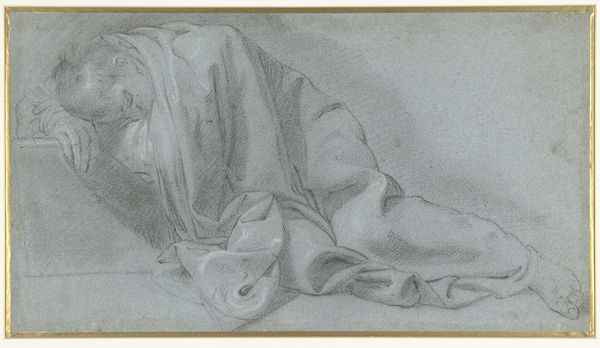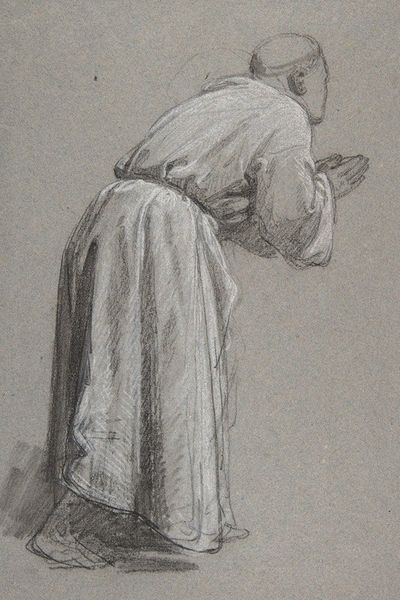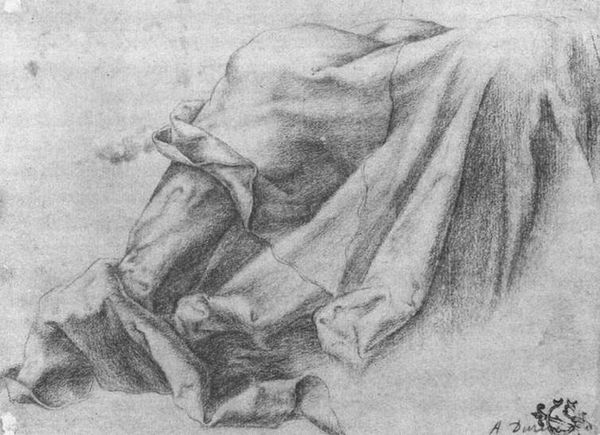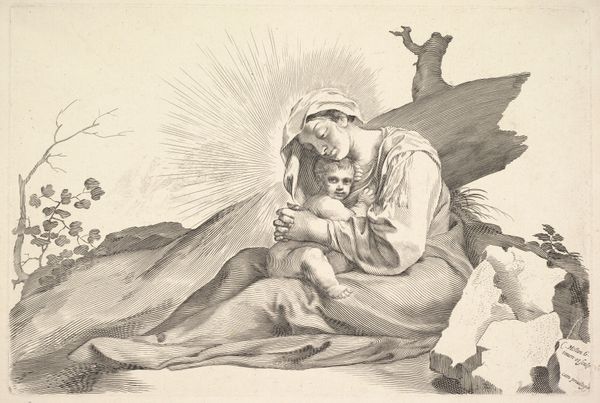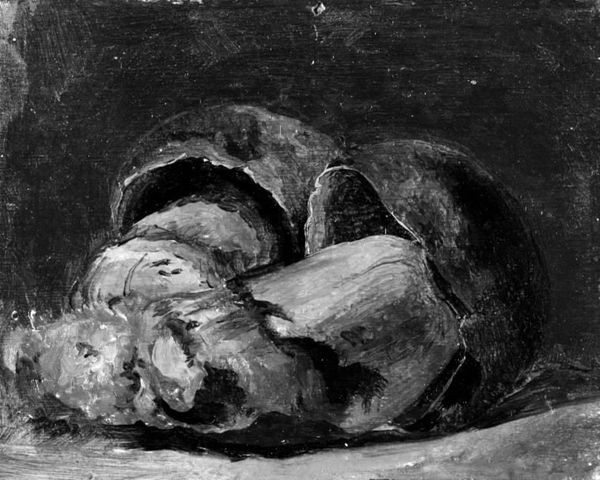
Kneeling girl in prayer (study for "Pilgrims at the Foot of the Statue of Saint Peter in Saint Peter's Church in Rome") 1864
0:00
0:00
drawing, charcoal, pastel
#
portrait
#
drawing
#
charcoal drawing
#
figuration
#
pencil drawing
#
costume
#
charcoal
#
pastel
#
academic-art
#
realism
Dimensions: 43 x 29.5 cm
Copyright: Public domain
Curator: Here we have Léon Bonnat’s 1864 charcoal and pastel drawing, “Kneeling girl in prayer,” a preparatory study, apparently, for a larger painting. Editor: It strikes me immediately how raw the emotion is despite its unfinished quality. There’s a palpable sense of supplication and vulnerability. Curator: Indeed. Consider Bonnat's deliberate mark-making – observe how the economical lines form both the woman's form and her costume, simultaneously depicting texture and the heavy drape of the fabric. The means of representation itself embodies the austerity and hardship she likely faced. Editor: This speaks volumes about societal constraints and the expected role of women at the time, always seeking salvation or answers from patriarchal religious structures. Note how her face is hidden, rendered anonymous. Does this represent all women, burdened by societal expectations? The work invites reflection on female agency, or the lack thereof. Curator: Certainly. It’s interesting, isn't it, how this work, although preparatory, presents a certain immediacy that can be lost in a finished piece. The viewer sees the working methods laid bare—the materiality and process foregrounded. It offers insights into academic practices of the period, with labor at its heart. Editor: Yes, and thinking of the final work, how does the meaning of the figure and her gesture alter when placed within the context of The Pilgrims? There are layers of readings here, both psychological and political. What drove so many to this place of worship, what were their economic conditions, and did their pilgrimage offer true liberation, or perpetuate oppression? Curator: Those are crucial considerations. Viewing the materiality here allows us to access not just the subject but the conditions in which devotional objects were being crafted and consumed during that period. It’s a complex transaction—faith, art, and the market. Editor: Absolutely, Bonnat's study provides a potent snapshot into the multifaceted reality of faith, gender, and class in the mid-19th century, captured by both the act and the context of the production. Curator: Thank you.
Comments
No comments
Be the first to comment and join the conversation on the ultimate creative platform.


